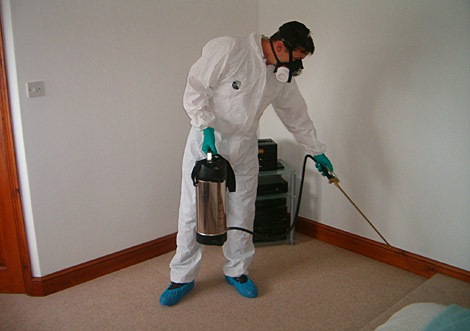In the realm of maintaining clean and pest-free environments, comprehensive inspections and treatments play a pivotal role in safeguarding homes and offices alike. Pest infestations can quickly escalate from minor nuisances to significant threats, compromising hygiene, structural integrity, and overall comfort. Implementing a systematic approach to inspections and treatments ensures proactive management and mitigation of potential pest issues.
The Importance of Inspections
Regular inspections form the cornerstone of effective pest control strategies. These assessments are not merely reactive responses but proactive measures aimed at identifying pest vulnerabilities before they escalate. Trained professionals conduct thorough examinations of both interior and exterior spaces, scrutinizing common entry points such as cracks, crevices, vents, and visit the site plumbing conduits. By understanding the dynamics of local pest behaviors and habitats, inspectors can pinpoint early signs of infestations and potential risk areas.

Tailored Treatment Strategies
Following comprehensive inspections, pest control experts devise tailored treatment strategies. These strategies are customized based on the type of pests identified, the extent of the infestation, and the unique characteristics of the property. Integrated Pest Management IPM approaches are often favored, combining chemical treatments with non-chemical methods like exclusion, sanitation, and habitat modification. This holistic approach not only addresses current pest issues but also prevents future outbreaks by addressing underlying causes.
Effective Implementation
Implementation of pest treatments requires meticulous planning and execution. Professionals use EPA-approved products and adhere to strict safety protocols to minimize environmental impact and ensure occupant safety. Techniques such as baiting, trapping, and targeted spraying are employed with precision to maximize efficacy while minimizing disruption to daily operations in commercial settings or home routines.
Continuous Monitoring and Evaluation
Pest control does not end with a single treatment. Continuous monitoring and evaluation are essential to gauge treatment effectiveness and identify any recurring issues. This ongoing process allows for adjustments in strategies as needed, ensuring long-term pest management success. Modern technologies, including digital monitoring systems and data analytics, further enhance the ability to track pest activity trends and optimize treatment schedules.
Education and Awareness
Beyond treatments, educating occupants about proactive measures and early detection methods is crucial. Informing homeowners and office personnel about common signs of pest activity, proper waste management practices, and the importance of timely repairs can significantly contribute to maintaining pest-free environments. Empowering individuals to participate in pest prevention efforts fosters a collective responsibility towards maintaining cleanliness and hygiene standards.
Environmental Responsibility
In today’s environmentally conscious landscape, sustainable pest management practices are gaining prominence. Integrated Pest Management emphasizes minimizing pesticide use through alternative methods like biological controls and habitat manipulation. By prioritizing eco-friendly solutions, pest control professionals contribute to safeguarding local ecosystems and preserving biodiversity.